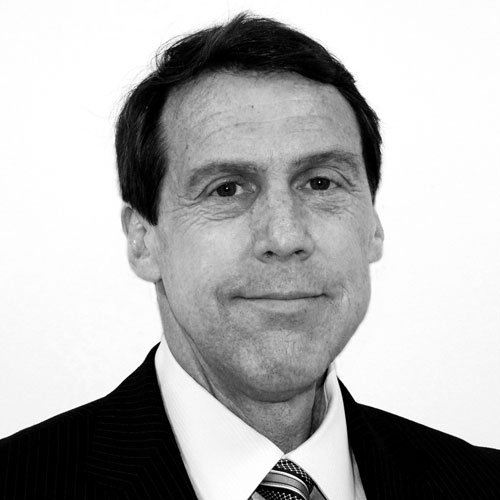The insurance industry juggernaut known as Cigna spans thirty countries and 86 million customers around the world. That massive scale necessitates a cohesive support system, which is backed by more than 37,000 employees worldwide and includes chief diversity officer Rosanna Durruthy. Here, Durruthy offers Profile a peek inside the elaborate internal and external cultures that she unites to propel Cigna forward.
What is your focus as chief diversity officer?
My responsibilities are largely oriented around creating a culture of inclusion at Cigna. In that work, my focus is on the workforce, our customers, our partners in the way of suppliers and healthcare professionals, and the communities we serve. Our focus is on creating a culturally competent environment that enables our customers to not only feel welcomed and comfortable with the environment, but more so, enables us to understand the cultures and backgrounds of the customers that we serve so that we can better connect and empower those customers in the choices they make around health and in their ability to engage in healthy behaviors.
What does a culture of inclusion mean?
An environment that is diverse in representation, but also translating the experience of what it is to come from a different background, to come from a different environment, and how that affects the culture of health. Ultimately, we want to embrace those differences to be better able to serve customers who come from different perspectives.
What are some of those different perspectives?
From a diversity-inclusion standpoint, that includes not only underrepresented minorities, it also includes people who may have different lifestyles (virtual employees would be a great example of that), and people who represent the different generations in the workforce. We do a great deal to focus on millennials and better understand their capabilities. They are now the largest generational cohort in the US workforce. It also means better understanding of our LGBT customers. We’ve focused significantly on our working space and serving the transgender customer and working with our clients on creating an environment where a transgender employee can feel not only included and respected, but where collaboration can help the environment perform better.
Do you focus more on the internal culture among Cigna employees, or the external culture for clients and customers?
It’s a combination of both, but for me it really begins with the employee. In large measure, it begins with understanding the composition of our workforce and then leveraging that composition effectively, not only in relation to how we’re developing talent and ensuring diversity representation at senior leadership levels in the organization, and how we are ensuring that we attract a diverse population to work in our industry. But taken beyond that, it’s really how we translate experiences associated with being someone who comes from a different background to better understand and serve what really constitutes an emerging and growing customer constituency.
What is the culture of health associated with various backgrounds and nationalities, and how does Cigna take it into consideration?
I often use the example that although my father was a physician, my maternal grandmother didn’t have more than a ninth grade education and raised six children. Her focus on health was constituted in Vicks VapoRub as preventative care. If you had a cold, if you were sneezing, if you had a sore throat—she’d break out the Vicks VapoRub. For others, who come from similar cultures where the instinct isn’t necessarily to go to the doctor for preventative care, the doctor may be seen as a highly trained professional whose role is to cure people who are sick. Most people don’t think of themselves as sick. It’s highly likely that what individuals do for the exercise of preventative care may fall in the realm of alternative medicine. So as we think about how we create a culture of health in the United States, where we help people combat the chronic illnesses that we see, we recognize it means altering certain behaviors while at the same time respecting the different spaces, experiences, and beliefs that people have about how to be healthy.
Tell me about your strategies and approach to promoting a culture of inclusion at Cigna.
Over the last five years that I’ve been with Cigna, we’ve focused our diversity-inclusion strategy on how we can optimize our workforce, how we can develop an empowering connection with customers, and how we can bring value to clients. We focus on how we can ultimately develop culturally competent partnerships. It’s about having partners who not only understand the customers we serve, but are able to take that understanding and apply it in how they interact with the customer.
How do you ensure that the culture of diversity and inclusion doesn’t get lost in the shuffle with such a large workforce?
We’ve really worked to not make diversity and inclusion an exercise around attending a training class. What it really looks like is, how is this happening in people’s real lives? We look at what gets in the way of our own employees’ opportunity and ability to be productive.
What are the challenges of creating and maintaining an inclusive culture?
Like many companies, some of the challenges revolve around the rapid pace of change. In an environment like ours, we’re still playing catch up and seeking to get ahead in terms of the ability to have data around our customers and apply that data in a smart manner.
How does technology help accomplish this?
The technologies are in large measure what we use in our day-to-day lives. Social media is certainly one way we’re beginning to differentiate our reach to the customer and engage when the customer not only has questions, but may have a point of view that is important for us to be listening to and observing.
Speaking of engagement, tell me about the HAIR project (Health Advocates In-Reach and Research Campaign).
The Cigna Foundation is partnering with the Maryland Center for Health Equity in the School of Public Health at the University of Maryland. The HAIR project consists of a process by which we’re helping train local barbershop owners who on Saturday mornings are serving their African American constituency and engaging in conversations that are oriented around trust, and in that environment introducing topics that can help save lives. The topic that the HAIR project in particular deals with is colorectal cancer screening.
How do colleague resource groups (CRGs) play a role in creating a culture of inclusion?
Our CRGs consist of several hundred employees who may or may not be representative of a demographic but are certainly interested in learning about that demographic, contributing to that body of knowledge, and translating that knowledge into actionable insights.
What’s an example of that?
Our Hispanic CRGs over the last couple of years have written a series of award-winning white papers to help translate the context of well-being, or as it would be known in Spanish, “buen estado,” into the kinds of behaviors and actions that employers, healthcare professionals, and certainly we at Cigna as employees can take to better communicate with our Hispanic and Latino customers, to empower those customers more effectively around the things that can be done, so that there’s greater awareness around how to behave in a manner that prevents illness and creates better health outcomes at lower costs.















